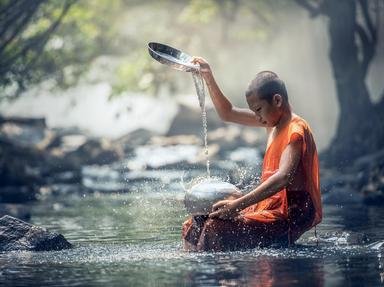Quiz Answer Key and Fun Facts
1. At its largest, the Aral Sea covered over 26,000 square miles in area. It was bordered by Kazakhstan and which autonomous region of Uzbekistan?
2. When it was at its largest, the Aral Sea was the fourth biggest natural lake in the world. Which of these was NOT bigger than it?
3. The Aral Sea has always historically been a closed system hydrologically speaking, in that all the water which entered it, stayed there. The only way water was lost was via evaporation and slow seepage into the ground. There are no rivers, streams, or underground outlet channels for the water. There is a special term for this type of closed drainage system; what is it?
4. What was the cause of the Aral Sea decreasing in area by 90% between 1960 and 2010?
5. In the mid 1980s, the remains of the Aral Sea split into smaller lakes, including the North Aral Sea and the South Aral Sea, when water levels dropped. Which of these rivers feeds the North Aral Sea?
6. In the 1990s a levee or dyke was built between the North and South Aral Seas to try and raise the water levels in the North. What was it called?
7. The former island of Vozrozhdeniya is (in)famous after it was used for which purpose by the government of the USSR?
8. This place was once a thriving seaport city, and since the 1960s has been between 100 and 10 kilometres from the shore as the water levels in the Aral Sea have fallen and risen slightly again. The rusting remains of the fishing fleet can be seen stranded all around the town; where are we?
9. As well as the fishing industry, the severe shrinkage of the Aral Sea led to a drastic decline in another industry; what was this?
10. In 2005, the government of Uzbekistan formed a consortium with several international agencies and companies to prospect for which valuable substance in the area previously under the waters of the Aral Sea?
Source: Author
Rowena8482
This quiz was reviewed by FunTrivia editor
Tizzabelle before going online.
Any errors found in FunTrivia content are routinely corrected through our feedback system.

